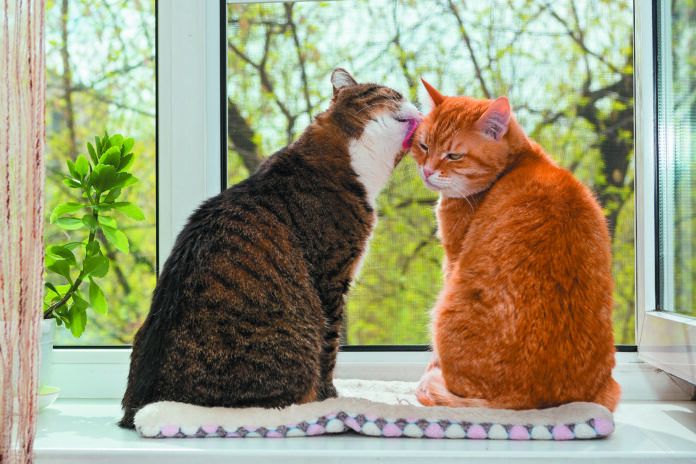“Cats are solitary survivors,” as both the American Academy of Feline Practitioners and the International Society for Feline Medicine point out. “They need to have free access to key environmental resources without being challenged by other cats….”
That said, in a multi-cat household, two or more cats may perceive themselves to be part of the same social
group, the two organizations say. They “positively affiliate” with each other. How can you tell? See if two or more of your cats engage in the follow-
ing behaviors:
- Rubbing each other’s faces or bodies.
- Wrapping their tails around each other.
- Resting or sleeping while their bodies touch each other or are at least in close proximity.
- Playing together.
- Allogrooming — a behavioral term for grooming each other.
The more of these behaviors that apply to at least two of your cats, the less they will mind eating near each other or having places to perch and nap near each other. Of course, even cats that get along should be provided the opportunity to dine and toilet themselves and hang out alone. Setting up your home for privacy if your cats want it (three litterboxes for two cats, for example) cuts down on illnesses that can arise because of emotional stress, such as urinary tract disease.
If you have two cats who identify themselves in the same social group and one or more cats who do not see themselves as part of that group and identify instead as solitary felines, it’s particularly important to give those loners the wide berth from other cats that they require for stable mental and physical health.




